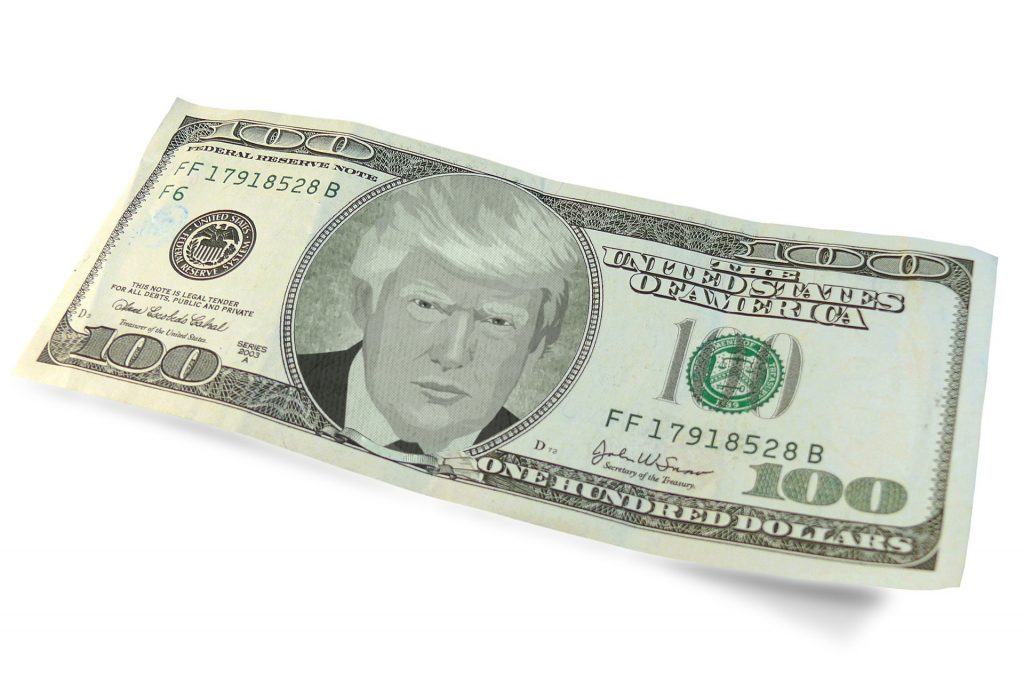You never have to default because you print the money.
—Donald J. Trump
Today we look at numbers. And oh…what you can do with numbers.
There are only 10 of them. But you can string them together in a sequence as long as you want.
Then, depending on where you put the single period, you can describe either the distance to Pluto…or the thickness of a molecule…
Twisted truths
Numbers can be as true as a carpenter’s level…or as twisted as the U.S. budget for the economy.
They may not lie. But they can hide the truth, disguise the truth, or pretend there is truth where there is none.
Put enough dodgy, dopey, and fakey numbers together, for example, and you have the U.S. GDP growth rate. The number is so full of fudge it will make your teeth rot.
They get it by subtracting the Consumer Price Index (CPI) from the nominal growth numbers. The economy is growing, in nominal terms, by 4%…and inflation (the CPI) is running at 2%. Subtracting one from the other, they get 2%.
But suppose you calculate the CPI the way the government did in, say, 1980?
Shadowstats economist John Williams still runs those numbers. He gets an inflation rate of 10%. Subtract that from nominal growth and what do you get? Minus 6%!
And what does it mean, anyway?
We’ll come back to that in a moment. First, let’s remember why we bother with the numbers at all.
Downward slide
We believe the American economy has been on a downward slide for at least 20 years. The Donald says he put an end to the decline when he took charge in January 2017.
Yesterday, we saw that numbers aren’t everything. To many people, simply having a president who seems to feel their pain and share their hopes and dreams is enough.
His enemies are their enemies. His battles are their battles. Donald Trump calls out the Europeans, the Canadians, the Liberals, the Chinese, the Quacks, Charlatans, and Claptrap peddlers. Many people think that alone should qualify him for Rushmore.
But let’s look at the numbers.
Typically, people look at GDP numbers — expressed in money — as a way of telling whether things are getting better. Or, they can look at wages. Or sales.
How many dollars does the average person earn? How much have businesses sold and how much profit have they made? ‘What are the numbers?’ they ask.
Mr. Trump may have truly ‘shattered the mentality of American decline,’ as he claimed in a speech to Congress on Tuesday night. But the numbers, for what they are worth, tell a different story…
Economy turnaround hypothesis
Generally, the economic figures — unemployment, wages, GDP growth, sales figures, productivity, investment — have either continued on the Obama Era trajectories of a late-stage expansion…or have gotten worse.
Unemployment numbers have continued to go down as they always do when an expansion nears its end. But ‘job growth’ has been slower than it was during the last three years of the Obama presidency.
Final sales growth figures are lower, especially when you take out government purchases.
Real fixed investment has averaged about half the rate of the Obama years.
Productivity is growing at the lowest rate of the last 40 years.
The growth rate in the total number of hours worked in the economy has fallen.
And the trade deficit rose from $503 billion in 2016 to $617 billion in 2019.
Of course, there are a lot more numbers. Some favor the ‘turnaround’ hypothesis. Others do not. Some are meaningless. Many of them, we just don’t understand. You can make of them what you will.
But here are some simple numbers that are worth noting…
(Rocky) boom years
Public and private debt grew twice as fast from 2017 through 2019 as it did during the last three years of the Obama presidency.
The U.S. budget, too, grew twice as fast under Trump as under Obama.
And the U.S. deficit doubled.
U.S. government debt rose from $19 trillion in 2016 to an expected $24 trillion this year, about the same rate of growth as during the Obama years. But Mr. Obama reigned through a recession; Mr. Trump has had only boom years.
Trump’s promise as a candidate was to eliminate the U.S. debt in eight years. Instead, Mr. Trump’s budgets — assuming no financial or economic setback, and assuming he is re-elected — will add $9.1 trillion…again about the same as Obama.
Economy picking up speed?
The Fed began ‘normalizing’ in December 2015, under Obama. At the time, it held $4.5 trillion of assets on its balance sheet.
Normalizing meant moving up the Federal Reserve funds rate and getting rid of the $3.6 trillion it acquired from its quantitative easing (QE) program following the crisis of ’08-’09.
Then, under pressure from Mr. Trump, it paused its rate cuts in February 2019. Six months later it reversed its ‘normalizing’ policy and began cutting rates again, still under pressure from the White House.
And then, in September, with its balance sheet at $4.2 trillion, it initiated a ‘repo madness’ program, once again inflating the U.S. economy with printing-press money…and bringing its balance sheet (a rough measure of the U.S. monetary base) on its way back to record highs.
Going by the numbers, we find little improvement. Just the opposite. They show just what we guessed: The decline is picking up speed.
But wait…even though numbers sound more ‘scientific’ than feelings…we know we can’t trust them. And they don’t really tell us whether things are getting better…or worse.
More to come…
Regards,
Bill Bonner
